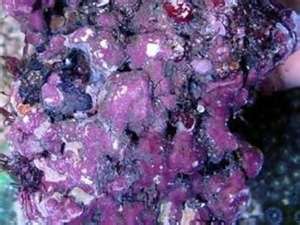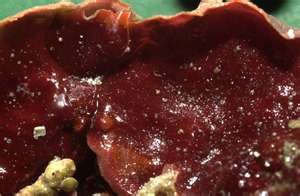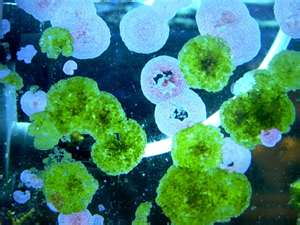Quote:
Originally Posted by
florida joe http:///t/388860/snakes-methods-for-growing-coralline-algae/20#post_3439185
some people never get a good growth of coralline. what do you think happened after six months to add in the growth
After reading a link Spanko sent me a few years back, I can only state that coralline algae can not grow in a system until you introduce it by adding live rocks or a "slice" of coralline sheath, which is a layer of cells that may be attched to a base rock.(pic below). The more types of Coralline that you introduce the more types you will find growing on your tank raised live rocks. I've noticed that new coralline algae starts to seed itself in the first month and it usually is found on the bottom base rock where the lighting is not so bright. This may have something to do with me adding "Ions" by Aquavitro which raises magnesium and maintains strontium and boron. Boron, in my research may play an unimportant factor but I am unable to locate a significant source to prove other wise.
Some studies indicate that by adding or dosing additives in the system may also jump start the spread and growth coralline, but in my personal opinion, buying a good piece of live rock and seeding the system is the most natural and safe way to seed or cultivate a system with good coralline.
Coralline is a living oraganism, a group of cells, but that may be safer in another thread.


I think Green algae grows first then the formation of the red/purple grows over this and crusts over...(see below)

this is green coralline algae.
These are my experiences and findings Joe and what I had noticed with my system over the last couple of years. With or without additives, if you merely get a good piece of L/R, you will get a good growth of C.A. but typically, not in 1 month.





